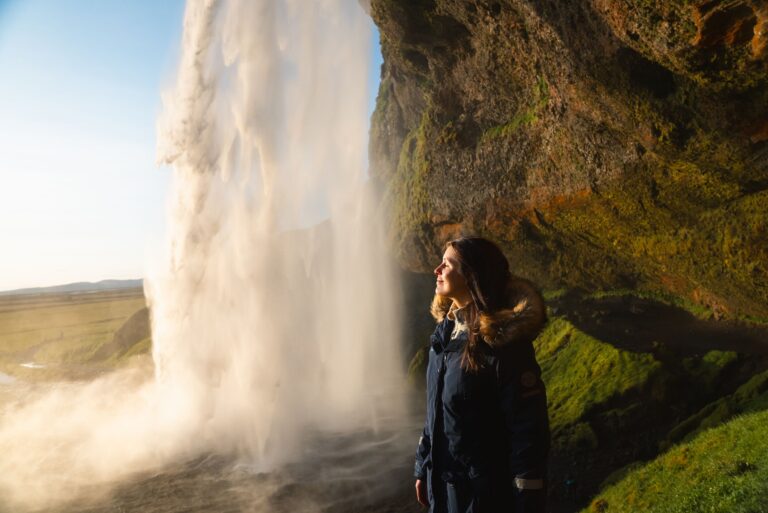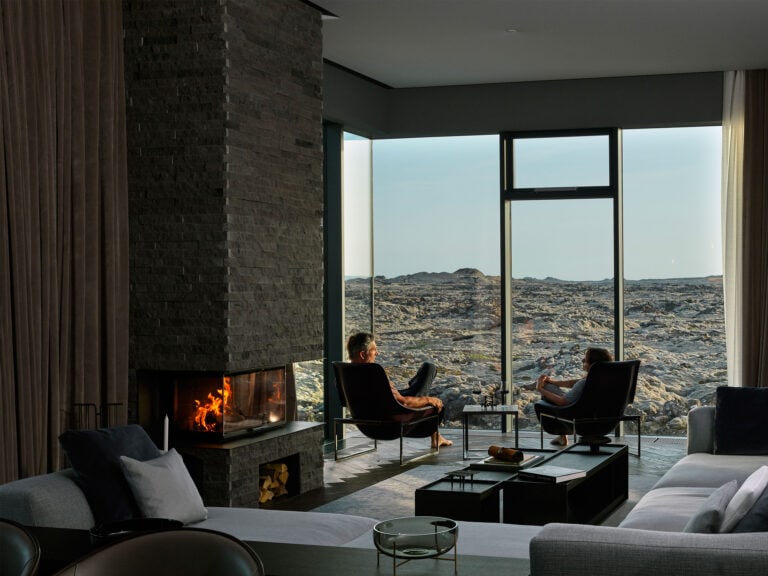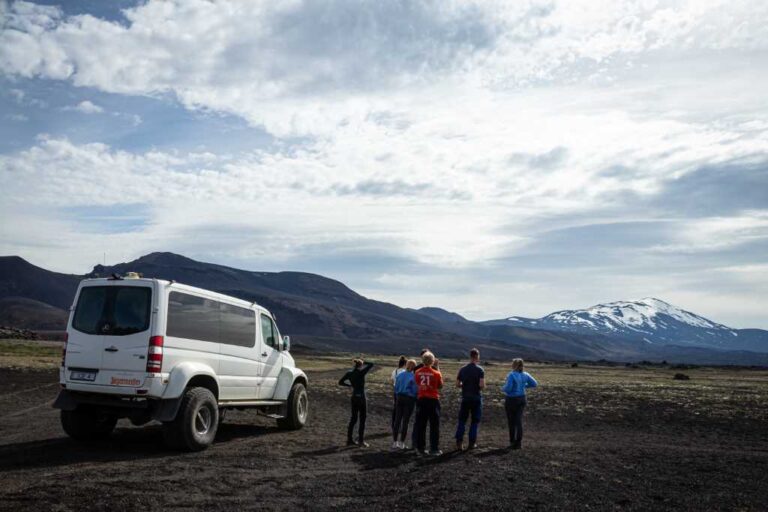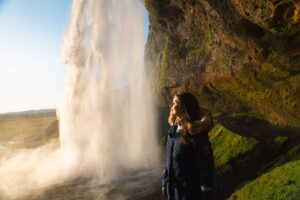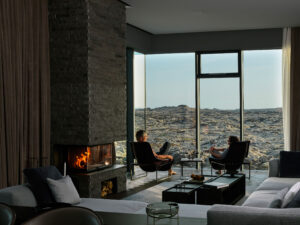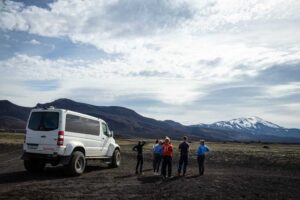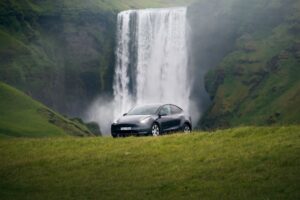Most visitors to Iceland tend to concentrate on the immediate area around Reykjavik. As a result, the eastern region has received little attention to date; being too far away is a common observation. It’s a mistake because East Iceland has an incredibly varied landscape, including a stunning coastline and beautiful little fjord-side villages. However, social media is spreading the word about this region, so it will likely become more prevalent soon. Its remoteness will not change, though, so those travelers wanting to enjoy Iceland without confronting crowds and mass tourism should take note.
The eastern region is very popular with locals, and not without good reason. Discerning tourists should think about following their lead. This article aims to teach the reader more about East Iceland, its climate, its geological features, and the highlights it offers. Another article concentrates on the attractions to include in your itinerary if you visit Iceland.

How to Get About
There is a single ring road – The Ring Road or Road 1 – going right around Iceland with Austurland, the eastern region, accessible via that road. The journey between Reykjavik and Egilsstaðir – the capital of East Iceland – takes between six and seven hours, driving non-stop. With so much to see and do on that journey, however, you will certainly want to stop, if only to take photographs!
How Many Days Do You Need in East Iceland?
Since this region is located in the opposite corner of the country from the capital, visiting East Iceland also means crossing at least one more entire region: South Iceland or North Iceland. We recommend traveling through these wonderful areas without rushing, as both North and South Iceland have natural wonders that deserve some of your time.
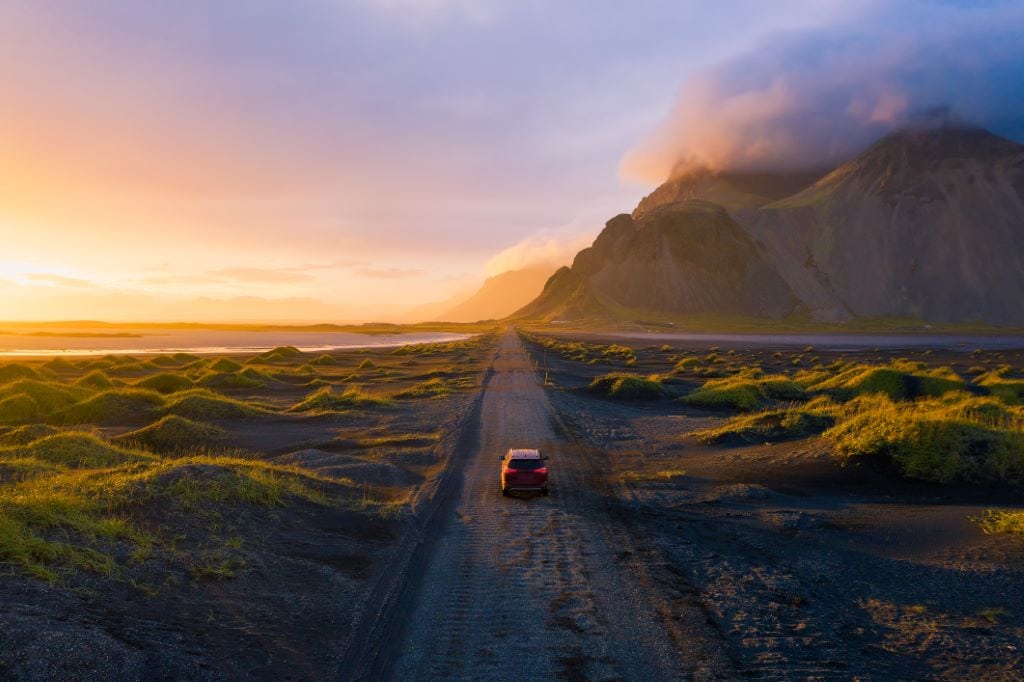
Ideally, given the time, we would suggest you travel all the way around Iceland, clockwise or counterclockwise. If you hurry, you can miss so much and might return to the capital, having spent too much time in the car. Spending at least ten days traveling around Iceland sounds about right, ensuring you miss nothing.
You should remember, however, that the shortened hours of daylight in winter mean that you have less time in that season to enjoy the natural setting than in the summer. Therefore, to avoid driving in the darkness and missing out on the beautiful landscapes, add a few more days to your timeframe if you’re traveling to Iceland in winter.
If you’re in a hurry, you can skip the entire northern and southern regions of Iceland by taking a domestic flight to Egilsstaðir. Starting from here, you can explore the eastern area in just four or five days. Anything less than three days will see you constantly driving rather than enjoying the surroundings.
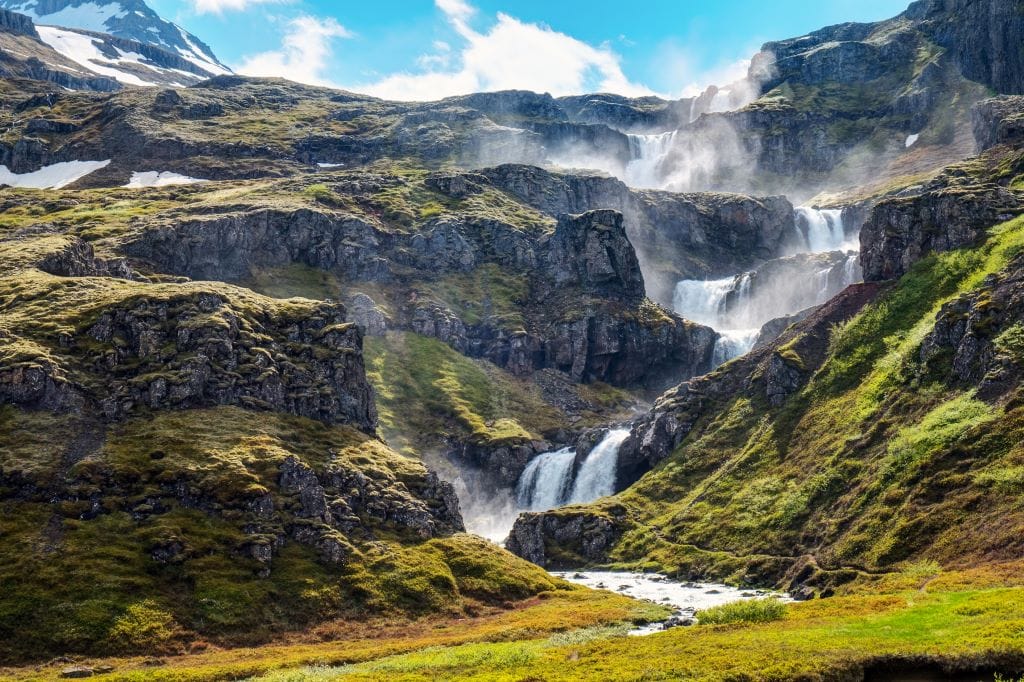
Guided Tours
If you opt for a guided tour, book a multi-day guided tour that will take you around the whole of Iceland, not just the east. There are plenty of stops along the way. While the shortest Ring Road tour lasts six days, there are alternatives lasting for up to two weeks. So if you have two weeks available, you will be able to spend more time in each location and leave Iceland knowing that you have really seen the country.
Self-Drive Tours
An alternative is to rent a car, plan an itinerary and go around East Iceland independently without a local guide. Campervans, motorhomes, and cars are all available to rent. This will require some planning, but we’re here to help you!
Self-drive Itineraries to East Iceland
Here are two great examples of self-drive itineraries around Iceland that include the exploration of the eastern region:
Any element of these itineraries can be adjusted to suit your needs and travel preferences. If you are interested in receiving a price calculation or additional information about a personalized travel package, don’t hesitate to contact us.
There is no reason why you cannot drive from Reykjavik independently but then join a day tour or guided activity once you are there. Tours are available starting from Höfn or Egilsstaðir, with plenty of alternatives such as nature sightseeing, glacier hiking, kayaking, boat tours, and even horse riding. In addition, you can get more information locally from tourist services as well as guest houses.

Towns, Villages, and Infrastructure
Just around 13,000 people inhabit East Iceland, a small fraction of the national population. Such a sparse population in a region measuring 23,000 sq km (8,800 sq. miles) has drawbacks. There are limited alternatives for restaurants and supermarkets, with just a few little villages beyond the two main towns.

Those towns, Höfn and Egilsstaðir, have the facilities you will need, cafes and restaurants, supermarkets and other shops, and gas stations. Egilsstaðir is regarded as the capital of East Iceland, unofficially at least. It was only formed in 1947 but has grown into a modern town of 2,300 people.
Of the smaller towns, look at Djúpivogur, Seyðisfjörður, and Borgarfjörður Eystri in fantastic natural settings. They have a few cafe and restaurant alternatives and small stores selling groceries. If you need accommodation on your trip, it is wise to book in advance because there are limited alternatives.

One of the earliest settlements in Iceland is Seyðisfjörður which you will find in a fjord carrying the same name. Graves there have been dated back to the 7th Century, while later Norwegian sailors made homes there. They built distinctive houses that remain today in the town, which is now home to 700 people. The highlight is the church in an attractive blue, where summer concerts are held in the summertime.
Djúpivogur is a Cittaslow town, the only one in Iceland. What is Cittaslow, you might ask? It aims to improve the quality of life within towns, targeting a slower pace of life while removing daily pressures. You will feel this if you visit the town whose location between two fjords is compelling. Add the breathtaking natural environment and fauna, and you will not want to leave.
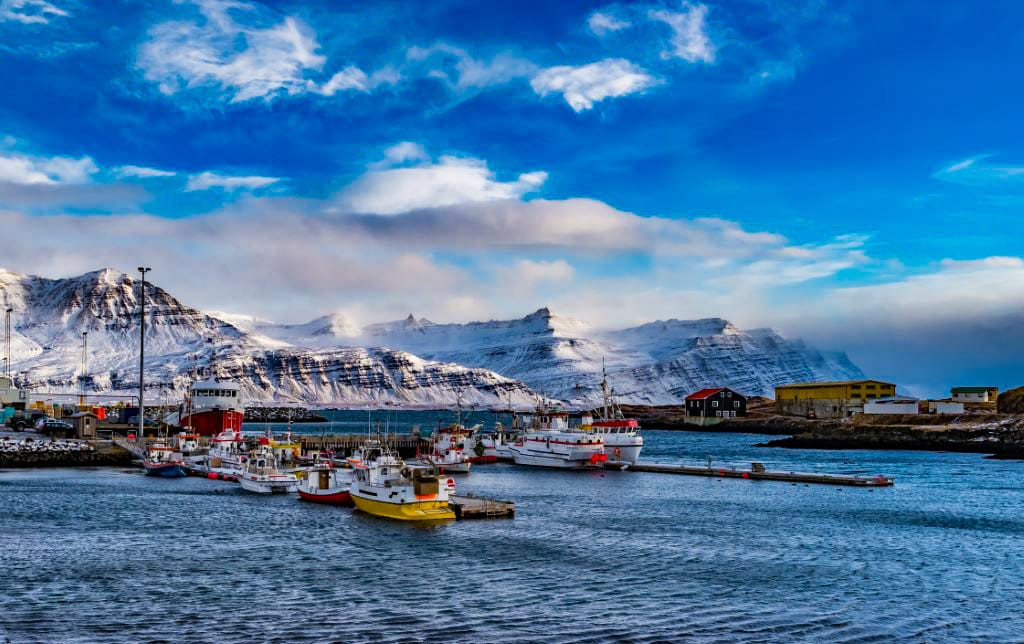
Road Conditions
The Ring Road poses no problems for you to drive around, yet more minor roads are not in the same condition, often both bumpy and narrow. The Ring Road’s importance to the island means it is well-maintained all year round. Yet, even then, winter conditions are a challenge. Occasionally the road has to be closed, even briefly. In the winter, a 4-wheel drive vehicle is needed if you want to explore the fjords. Don’t try it if you are an inexperienced driver. Summer, however, is fine in any vehicle.
East Iceland Weather
East Iceland’s climate is slightly colder than other parts of the country. The reason is largely because part of the cold East Greenland Current heads past Iceland’s northeastern and eastern coasts. As a result, the Current reduces the sea surface’s temperature and affects the coastline’s weather and temperatures.
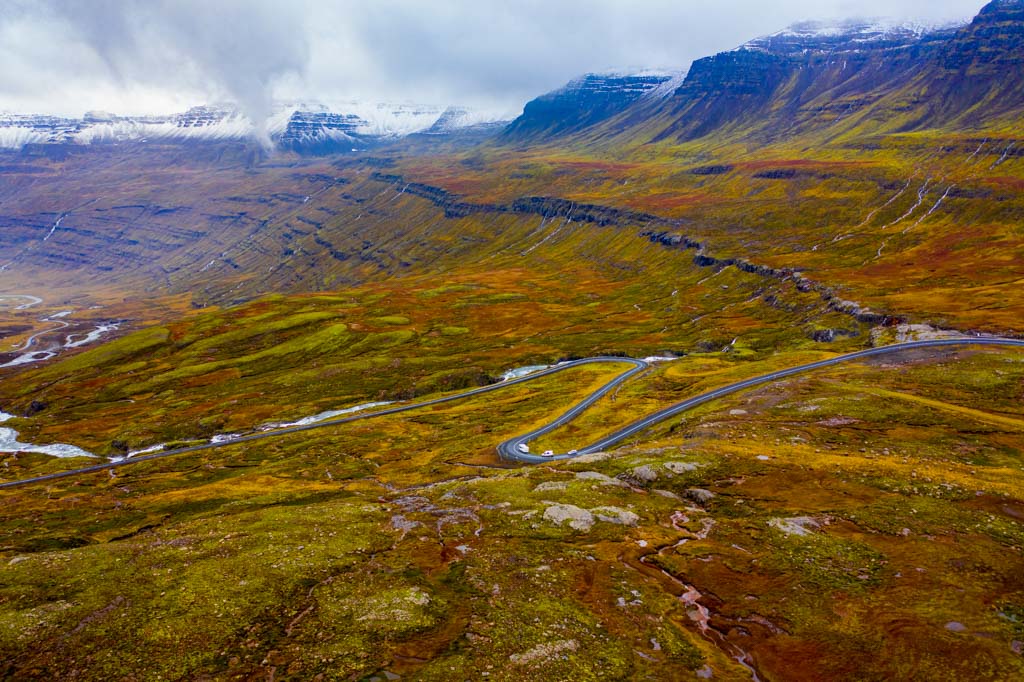
Winter begins earlier than in the West and South of Iceland and lasts longer. It is important to bear this in mind if you are planning your own itinerary. Visiting the fjords in the East during the winter can be a real challenge. There is plenty of snow, with roads regularly slippery and icy. So you must be prepared for this as you head out.
There are few issues, however, in the summer. Nothing tropical, of course, but on lovely summer days, temperatures can reach 18-20C (64-68F).

Geology and Landscape
The East is the oldest part of Iceland, geologically. This is because the island is located on the boundary of tectonic plates continuing to drift with the East and West spreading, making the East and west the oldest parts of Iceland.
Some of the remains of central volcanoes, 14 in all, are magnificent. They are scattered throughout the region. Their origin is back in the Ice Age when glaciers fashioned the surface. As the ice melted, volcanic features, including magma chambers, were revealed.
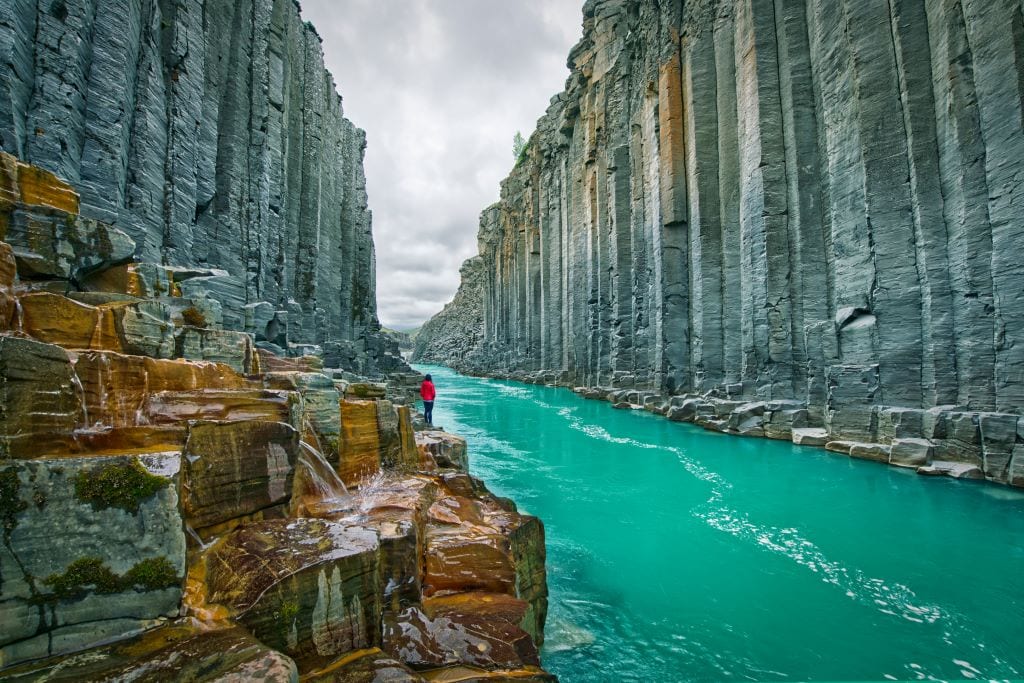
The story of the Earth’s formation is told in the local landscape. Green and soft valleys, steep fjords with layers set down over the centuries, and basaltic lava layering are features you will see, the latter from the beautiful Hengifoss waterfall especially (described in this article). In addition, this region is famous for rhyolite formations and a number of great minerals, notably amethyst, opal, jasper, onyx, zeolites, and fossils.
The East is where you will find what the people called “solar stone” in medieval times, but today it is known as a spar. In the 17th Century, the transparent form gathered fame because of its double refraction properties. The early development of wave optics was mainly down to this form of calcite. There is a fine collection on display in Petra’s Stone Collection at Stodvarfjordur.

Wildlife
Not surprisingly, given the East is the most sparsely populated part of the island, it is a great place to see the wildlife of Iceland. It includes hundreds of species of birds and several locations from which to observe them. Borgarfjörður Eysti is the place to go for puffin-watching, for example. You can also expect to see seals and arctic foxes, Iceland’s only native land mammal.
However, the highlight is undoubtedly the reindeer. The reindeer was introduced from Norway for farming, but the exercise was unsuccessful. As a result, they live wild in the region’s mountains. You are likely to see herds without leaving the road, particularly in the colder weather when they come down to lower land searching for food.

Sagas and History
East Iceland’s history predates that of the Nordic settlement in Iceland. Yet, even in the remote Highlands, there are signs of history from centuries ago. Ruins and sites are everywhere: fjords, farms, and villages.
The Romans were probably the first people to reach Iceland. Their coins were discovered near Djúpivogur, proving they were there in the 1st Century. Likewise, there is evidence that Irish monks came to Iceland searching for solitude in medieval times.
Icelandic sagas tell of hermits on the island in the 8th Century when Vikings first reached Iceland. Ingólfur, Arnason, and Hjörleifur were the first Vikings to arrive in East Iceland, where they spent a whole winter.
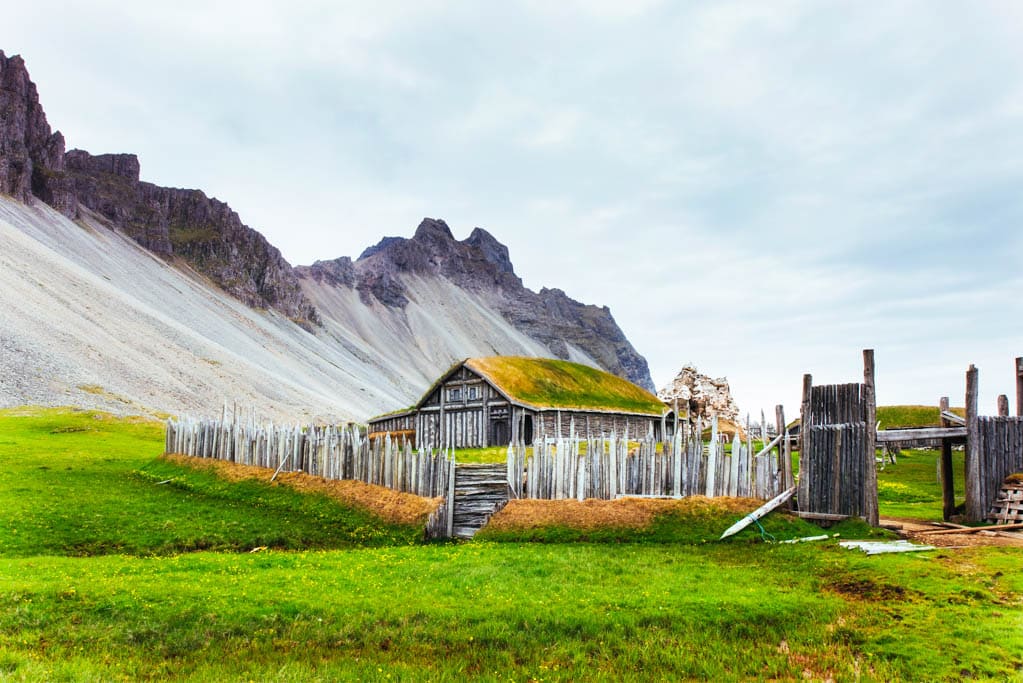
You can take one of several hiking trails, including historical locations and saga landmarks. This is a mystical land, a description earned because of legends concerning supernatural creatures. Add that to the burial sites and the ruins of ancient monasteries, and you have compelling reasons to explore.
In the 19th Century, East Iceland thrived because of the whaling and fishing industry. A whaling station run by Norwegians existed in the East. It was the largest in the world at that time. With prosperity came the growth of several villages in the fjords. Seyðisfjörður became a communication hub after receiving the first telegraph cable from Europe in 1906.
Fishing is still the primary industry here, while agriculture and livestock is an important activity in the valleys. A large aluminium smelter is found in Reyðarfjörður, Egilsstaðir has an international airport, and the Norröna ferry runs to and fro from Seyðisfjörður, connecting Iceland with Denmark and the Faroes. Tourism has become increasingly important, helped by the transport infrastructure.
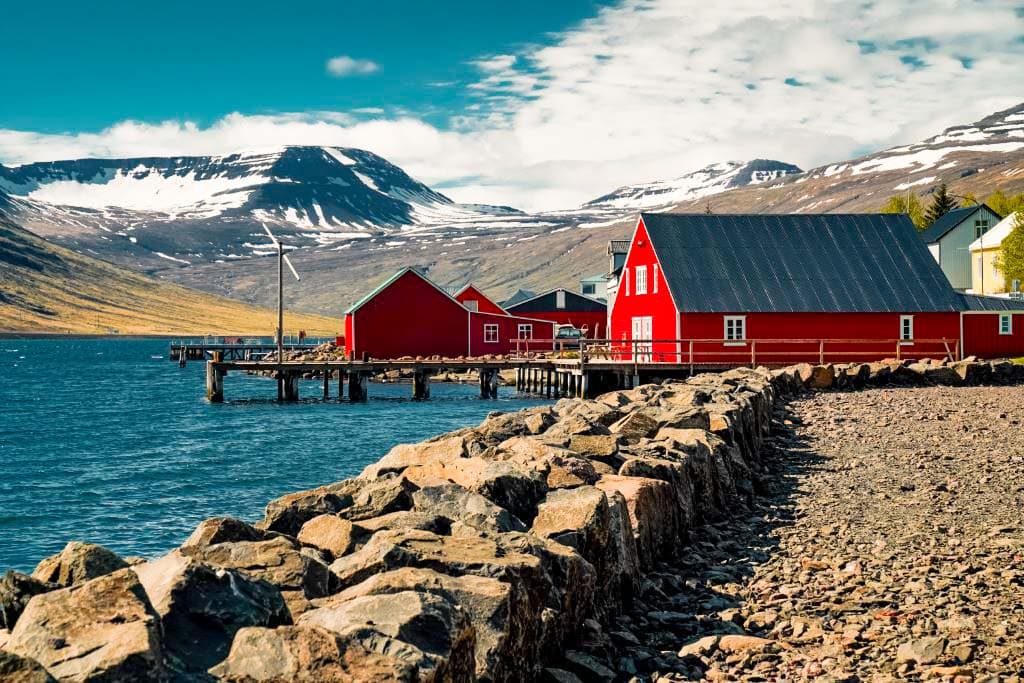
Things to Do in East Iceland
Exploring
Whether you hire a car or take a guided tour, traveling the roads around East Iceland is something you must do to see its highlights. In addition, you can take detours off the main road to visit the remote villages of the east. It’s well worth it, so stop in every village, sit with a coffee and a snack and ask the locals about their home district and the history and sagas associated with the locality.
These detours may not be possible in the winter because of the conditions of the minor roads. You should check things in advance before attempting particular roads and journeys. Indeed, the Highlands can be rugged even in the summer, especially in a small car. A guide is probably your best bet for visiting the Highlands; find tours here.

Kayaking and Sailing
You can get a different perspective of a region from the water, hence the popularity of kayaking and sailing. Perhaps kayaking is not for the novice, but experienced kayakers will love paddling around the fjords. The waters are usually calm and safe, ideal conditions for kayaking. Guided kayaking is available for beginners, while boat tours are offered in many villages.
Hiking The Glaciers
There are more than 30 outlet glaciers in Vatnajokull, with several suitable for hiking. The area of Skaftafell is arguably the best, while tours to Hofsjokull, which is further East, are another excellent option. However, remember that you should have a local guide, suitable footwear, and equipment before contemplating hiking on a glacier. Find guided glacier hike tours here.

Take a Soak in a Geothermal Pool
Iceland is well known for its stunning geothermal pools, and nowhere are they more impressive than in East Iceland. Vök Baths on the beautiful Lake Urriðavatn is a great option, just a short drive northwest of Egilsstaðir.
Head to the lake, and you will find several geothermal pools. The pools of warm water literally float on the lake, an experience you will never forget. A 360-degree view over the immediate area will fill your eyes as you relax in the warm waters. If you travel to East Iceland, you really must experience this.

Hiking
If hiking is your thing, East Iceland is your paradise. Lots of the locals spend their holidays hiking in East Iceland. No one will ever tire of this beautiful natural environment! Add to this that fewer people roam this region than take the trails in the west and south, and you can see yet another advantage of selecting this part of Iceland.
Vatnajokull National Park is the best place in Iceland for anyone interested in nature and hiking. Imagine seeing the verdant birch forests and blue glacier tongues, truly rugged, and you can get the picture Skatafell paints. The Highlands are volcanic and barren, while the Dyrfjoll mountains near Borgarfjörður Eystri will remind you of the Alps. There are lovely views from the top of the mountains at Seyðisfjörður, and great trails through the island’s most extensive forest will capture your heart.
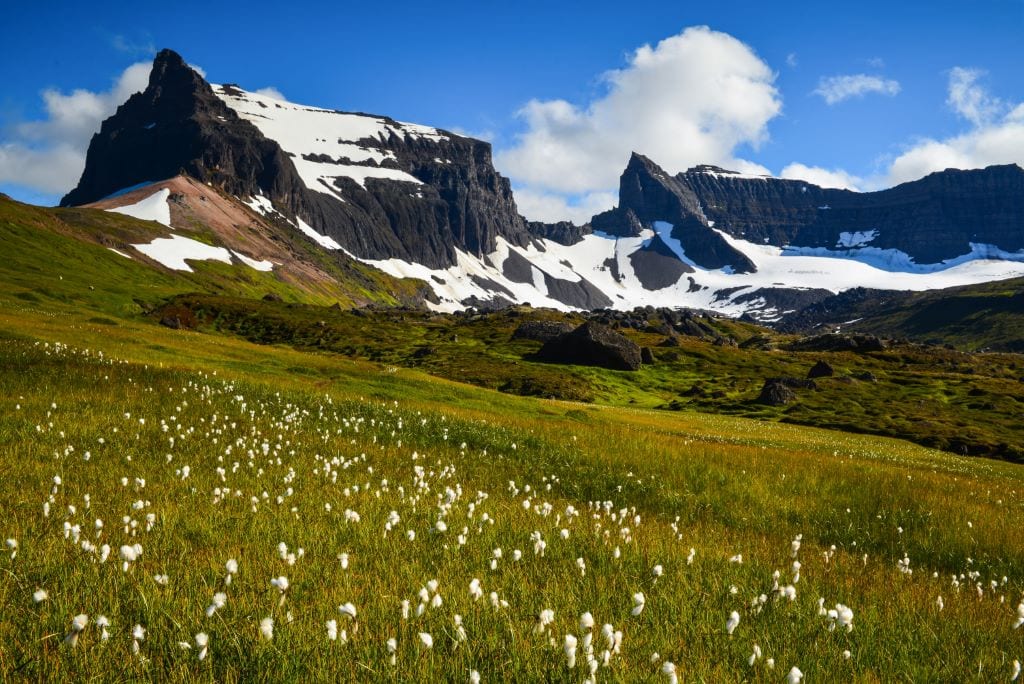
Art and Culture
East Iceland is famed for attracting and encouraging both creativity and entrepreneurship. The locals are a real mix and a mix that lives in true harmony. Expect to encounter broad-mindedness alongside offbeat understanding. The whole environment encourages creativity while giving you a healthy boost. Lovely art galleries and outdoor sculptures await culture lovers.
Seyðisfjörður is often called the art capital of Austurland, and this is where the LungA Art Festival is held. It is a unique festival that attracts the young and their talents. In the middle of July, people gather for a week in this small town of only 700 inhabitants to enjoy the space created by electric vibes from various art forms melting together when young people from all over the world unite in one place through their creativity. The week ends with a celebration, exhibitions, and concerts. Lunga has been a real boost to the village, adding to its existing attractions.
The Fish Factory Creative Centre in Stodvarfjordur is a community project in which many people collaborated and still do. The result is a center where you can see true creativity and beautiful crafts. It is a recent addition to the town and has followed sustainable principles and defined methods.
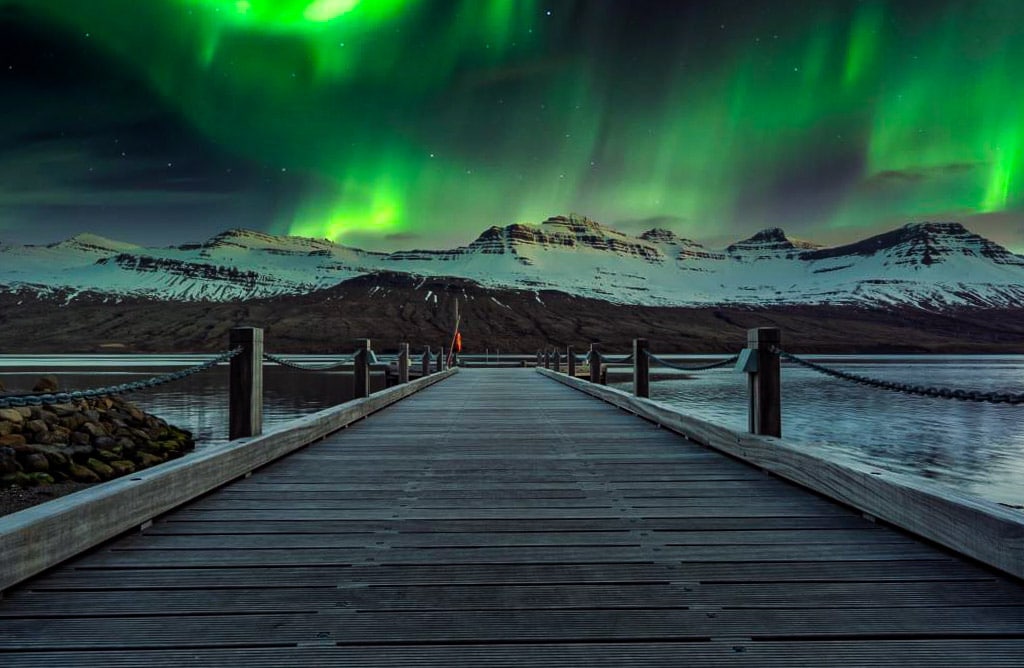
The Slaughterhouse Culture Centre in Egilsstaðir gets its name because of its use in former times. If you are interested in art, this is a place that you should include on your itinerary. You can expect an art exhibition with exhibits recognizing East Iceland’s history.
Music Festivals
July is the month of the famous Einstnaflug in Neskaupstaður. It has been described as “The World’s Friendliest Heavy Metal Festival” and has been held annually since 2005. In its early days, performers were paid mainly in kind; beer and gas, occasionally money. Today, it has developed into an occasion where international acts perform.
Also in July, the last weekend in the month, the “Braedslan in Borgarfjörður Eystri” takes place in the above-mentioned Fish Factory. The small population of the village multiplies several times over. This is the largest music festival in Austurland. Demand far outstrips the number of tickets available to attend. However, that does not deter people who come anyway, camp, and enjoy the atmosphere that the occasion creates.
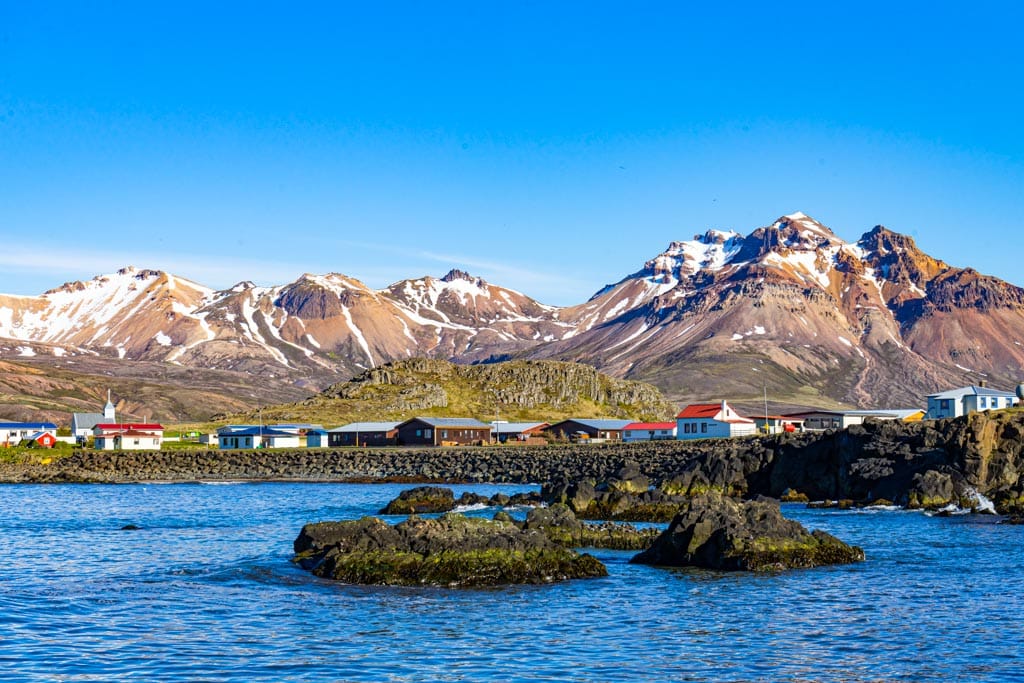
We’ve covered the most interesting facts and most exciting activities regarding East Iceland in our article. In this separate article, you can read about what to see in the region. Contact us for your tailor-made vacation package, and a local professional will personally help you to plan your perfect East Iceland holiday.

